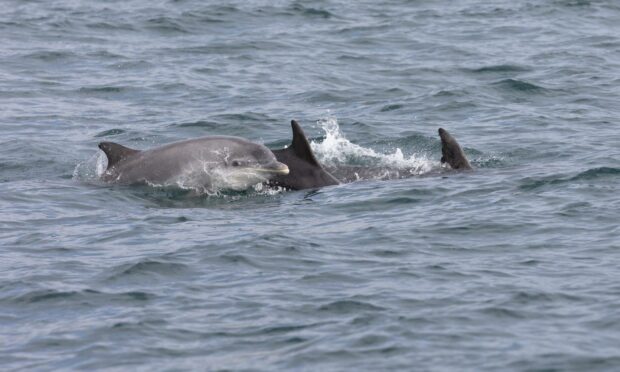Wildlife watchers who have photographed dolphins in the north and north-east are being urged to document their photos to help protect the species.
Citizen Fins is looking for photographs of animals in areas not covered by SMRU and the University of Aberdeen annual photo-ID surveys, primarily south of St Andrews Bay and the Tay estuary, but also along the Grampian coast.
It is believed that keeping track of dolphins is key to protecting their species. The East Grampian Coastal Partnership is calling on photographers to look back through their photos and send any images that may help.
Photographic ‘fin shots’ that show distinctive nicks and scrapes on the tall dorsal fins identify the animals. These are used to discover the range of an individual dolphin, but can also be used to estimate population size and the birth and mortality rates of the population.
Dolphin Yoda found alive off coast of Denmark almost a year after vanishing from Moray Firth
This week it was thought that the famous dolphin, Black and Decker had been spotted by Charlie Phillips from WDCS and Monica Arso Civil from the Sea Mammal Research Unit (SMRU) in north-east waters for the first time in several years.
The identification was based on a photograph taken by marine Scotland project manager of the East Grampian Coastal Partnership, Ian Hay, and a keen photographer who organised the trip with Andrew Buchanan from Stonehaven Sea Safari.
Mr Hay explained: “It is great that our images can be used to understand these amazing creatures.”
The dolphin photographed turned out to be another one called Firework, which highlights how important it is to document photos to correctly identify the creatures.
The photo also shows Crackers, a female born in 2009, and possibly her calf who was born in 2019.
Monica Arso Civil from Citizen Fins project explained: “Because one cannot survey the entirety of this population’s distributional range, SMRU launched a citizen science project called Citizen Fins in 2020, which combines research and citizen science photo-identification data of bottlenose dolphins, to help understand how the pattern of movements of bottlenose dolphins along the east coast of Scotland and into north-east England is changing.”
The images can be uploaded to social media with the hashtag #citizenfins, emailed to citizenfins@st-andrews.ac.uk or uploaded onto the Citizen Fins website.
